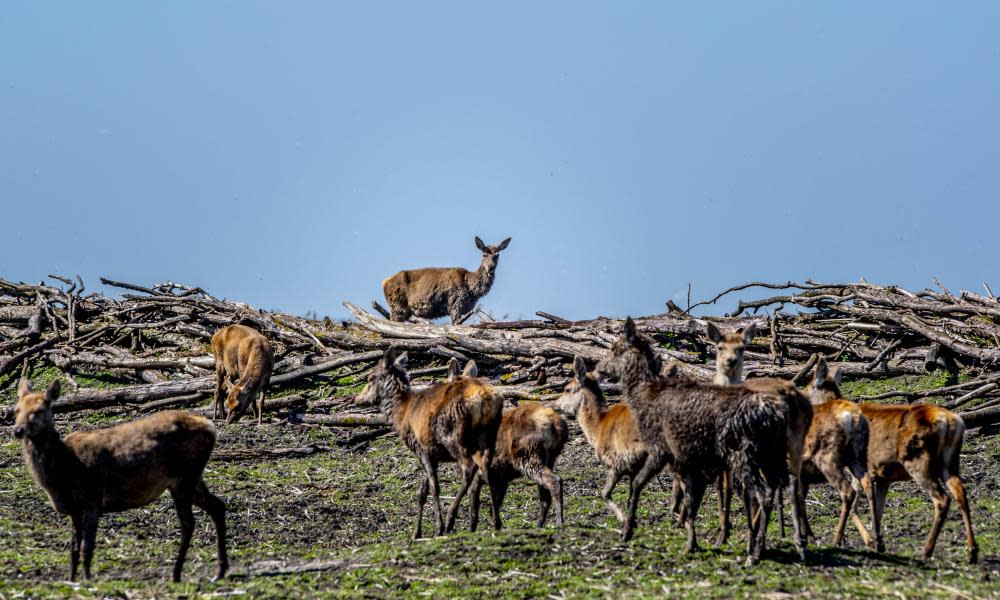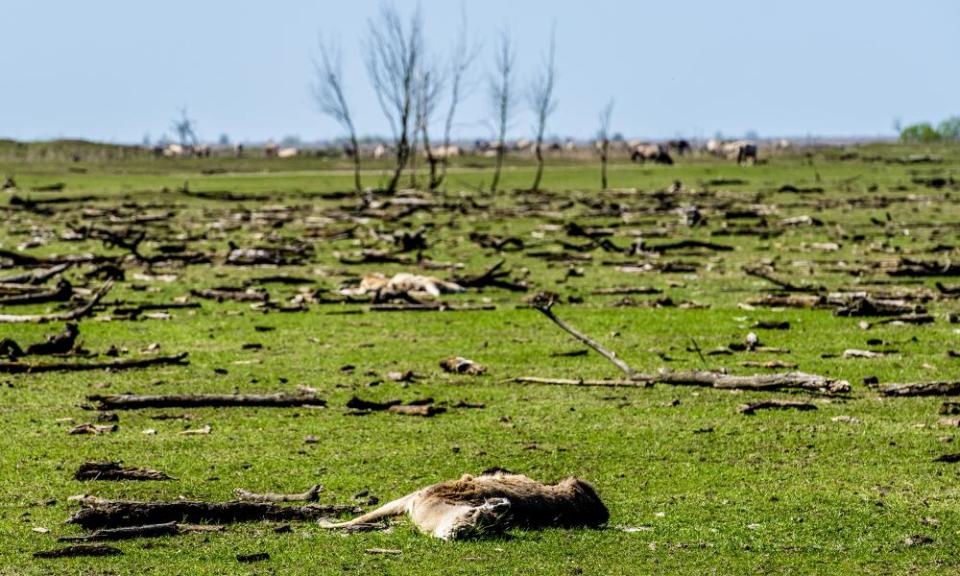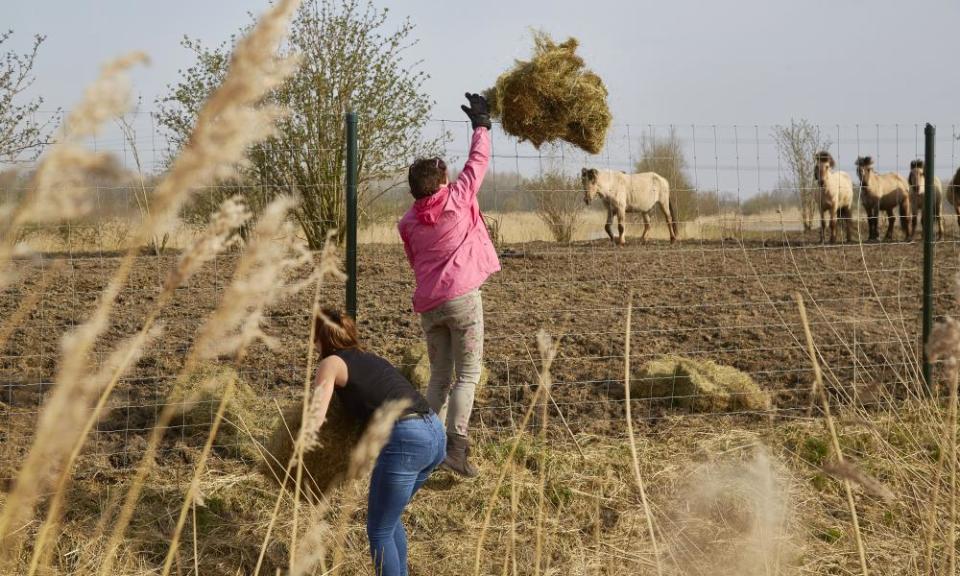About 1,000 deer to be culled at controversial Dutch rewilding park

A Dutch provincial council has authorised the mass culling of about 1,000 deer on a controversial nature reserve east of Amsterdam where more than 3,000 red deer, ponies and cattle died last winter, almost all of them shot by park rangers because they were starving.
A report by a special committee of Flevoland council this year demanded an immediate end to the rewilding principles on which the unique 15,000-acre Oostvaardersplassen reserve was run, which allowed “natural processes” to determine the herbivore population.
The report recommended the animals’ numbers should be capped at 1,500 to stop further winter fatalities, that the wetland area of the reserve should be expanded, and that new forest and marsh areas should be created to provide the larger animals with additional shelter.
The committee’s decision on Wednesday means the cull of the reserve’s remaining red deer population by roughly two-thirds, to about 490, will start at the end of the month, Dutch media reported.
Plans by animal rights campaigners to capture and relocate the deer were rejected as impractical and too expensive, although most of the ponies on the reserve will be rehoused.

The land now occupied by the reserve emerged in 1968 when an inland sea was drained to create space for new Dutch towns, including Almere. It remained undeveloped throughout the 1970s, leading a Dutch ecologist, Frans Vera, to introduce large grazers to control the density of the grasses, reeds and shrubs.
In 1983, Vera introduced 32 Heck cattle, 18 Konik horses and 40 red deer to the reserve, which soon began to see endangered birds migrating there. The theory was that the large herbivores would ensure the environment stayed favourable for the birds, while themselves roaming wild.
But after a string of mild winters boosted its large animal population to more than 5,200, 3,226 animals died on the Oostvaardersplassen in the unusually harsh conditions – heavy rain, followed by a sustained cold snap – of December 2017 to April 2018. Just over 89% were put down to prevent further suffering.
As protesters threw bales of hay over the reserve’s fences to feed the starving animals, and celebrities such as the three-time Olympic dressage champion Anky van Grunsven railed against “animal abuse”, the reserve’s defenders received death threats from angry campaigners who compared it to Auschwitz.
Park wardens were forced to move animal carcasses, which were once left in situ to provide food for everything from beetles to ravens, away from the perimeter fences and a mainline railway track that passes nearby because of public distress.
“It’s an experiment that has absolutely failed,” Patrick van Veen, an animal biologist whose online petition to stop animal cruelty at Oostvaardersplassen was signed by more than 125,000 people, said this year.

“You’d expect 20% or 30% to die of natural causes, including starvation, each year, but the population grows in summertime and there is no control mechanism – normally you’d have predators such as wolves, but it’s too small an area to have predators.”
Some ecologists, however, have argued that the natural ecosystem is only now beginning to work and that natural processes should be trusted, no matter how distressing it may appear.
Han Olff, an ecology professor at the University of Groningen, said people see horses as pets, which has complicated matters, while the very fact that “the animal population has been able to boom” is evidence that Oostvaardersplassen is suitable for the species living there.

 Yahoo News
Yahoo News 
